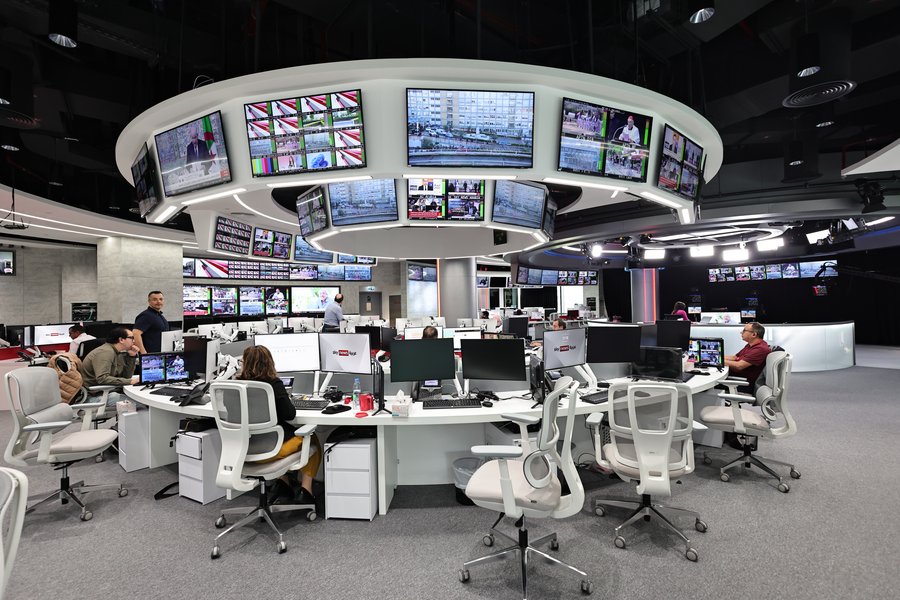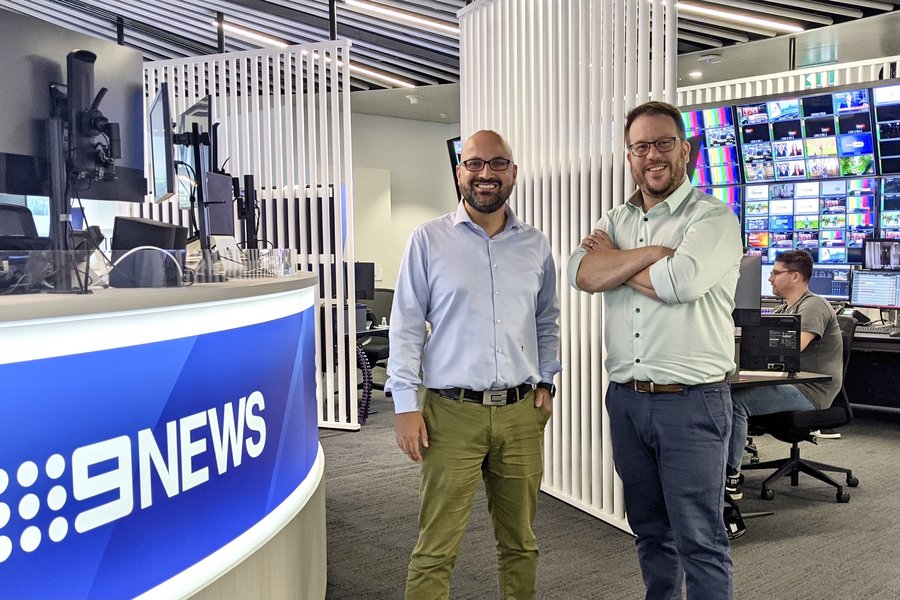Media infrastructure migration: Balancing technical modernization and cultural realignment

How broadcasters can utilize relocation as a catalyst for digital transformation, process innovation, and cultural change
Relocating a broadcast facility ranks among the most complex transformation projects in the media industry. It extends beyond logistical and technical challenges, deeply impacting established structures, personnel, technologies, processes, and organizational culture.
This complexity underscores its strategic significance. Relocation presents a unique opportunity to replace outdated infrastructures, harmonize fragmented workflows, and overcome cultural inertia. By intentionally designing this transition, broadcasters can align technical upgrades with organizational realignment, laying the foundation for a future-ready, digital newsroom.
Success requires an interdisciplinary approach that combines technological expertise with change management and architectural sensitivity.
Technical migration: Building infrastructure for a new production paradigm
The primary technical objective of a broadcast relocation is clear: to seamlessly transfer production, storage, and distribution systems to a new environment without disrupting ongoing operations. Typically affected systems include:
-
Video/Audio production systems (ingest, editing, playout)
-
Media Asset Management (MAM) and archival solutions
-
Rundown systems, automation, Newsroom Computer Systems (NRCS)
-
Communication infrastructure (intercom, messaging)
-
Network and storage architecture (IP, SAN/NAS, hybrid cloud)
-
Quality control, monitoring, and IT security
Often, a temporary parallel operation is necessary, synchronizing legacy and target systems for testing and iterative transition. Key technologies like SMPTE ST 2110 enable flexible, IP-based signal routing and software-defined production chains, facilitating virtualization, modular scaling, and centralized control via broadcast platforms.
Hybrid models are increasingly prevalent, incorporating cloud components for remote collaboration, browser-based editing suites, and orchestrated transcoding through platforms, enabling scalable setups and location-independent workflows.
Migration during live operations: Test-driven parallelism over broadcast interruptions
Broadcast transformations differ from traditional IT projects due to the imperative of continuous operation: the station must remain "on air" at all times. This entails:
-
Maintaining uninterrupted control over live signals
-
Ensuring editorial and production processes function across dual system landscapes
-
Recognizing that fail-safety is not optional but mission-critical
Meticulous migration planning is essential and includes clearly defined migration phases, test-driven transitions, live cutovers, and fallback options. A realistic test environment for the new workflow should also be established. This environment incorporates actual system integration, dummy data, load simulations, and structured user testing. As a result, errors can be detected early, requirements can be refined, and users can be actively involved throughout the migration process.
Workflow redesign: Transitioning from linear processes to modular production logic
A technical relocation also invites functional reinvention. Transferring outdated workflows into new spaces often means carrying over existing problems. Instead, relocation offers the chance to reconceptualize production processes as modular, interconnected, and automated. This enables:
-
Elimination of redundant processes (e.g., repeated transcoding or tagging)
-
Seamless integration of planning, production, and distribution
-
Transition to collaborative, cross-media teams
-
Integration of automated processes for metadata assignment, quality control, or scheduling
The trend is moving towards story-centric newsrooms, where the narrative takes precedence over departments or distribution platforms. Editorial, production, and distribution teams collaborate on stories adapted across media channels.Content is planned cross-platform with a consistent logic for broadcast, social media, OTT, and web. This requires a new foundation:
-
Interconnected systems: Breaking down technological silos and standardizing interfaces. Only integrated systems allow for continuous data flow from topic planning to publication.
-
Unified metadata standards: Consistent tagging is crucial to make content discoverable, usable, and scalable across platforms.
-
Workflow architecture without media disruptions: Processes must be fully digitized and synchronized to ensure efficiency and consistency. Media disruptions, including exports, conversions, or manual handovers, slow down production and put overall consistency at risk.
Implementing a story-centric approach fosters a more seamless and collaborative workflow, ideal for today’s fast-paced, multi-channel newsrooms.
People at the core: Cultural change begins before migration
Technology can be planned; culture cannot. The true lever for sustainable transformation lies in change management: in people's attitudes, their acceptance of new approaches, and their willingness to embrace change.
Relocation can cause uncertainty due to altered routines, new tools, and different teams. Therefore, actively managing cultural change is vital through early involvement, transparent communication, and targeted training programs. Success factors include:
-
Participation: From the outset, employees are actively involved in shaping change, not just reacting to it.
-
Orientation: Clear roles, comprehensible goals, and understandable narratives provide security.
-
Enablement: Training, sandbox environments, and learning formats lower barriers and promote self-responsibility.
This fosters understanding of the transformation's purpose and goals, leading to genuine acceptance that extends beyond the project's conclusion.
Spatial design: Newsroom as a dynamic interaction space
Space influences communication, collaboration, and innovation. Modern newsrooms are therefore not merely production sites but multifunctional interaction spaces. They combine transparency with retreat options, flexible technology with intuitive use. Technological infrastructure becomes an integral part of spatial design: through mobile multiscreens, software-based workstations with remote access, or smart whiteboards for spontaneous collaboration.
Crucially, the space should not only reflect editorial processes but actively promote them. This is achievable only when editorial teams are involved early in the planning process: through co-creation, usage simulations, or prototypical work environments, resulting in a space that functions effectively and inspires the development of innovative content.
Conclusion: Broadcast relocation as a blueprint for digital transformation
A broadcast relocation is more than a physical move; it's a strategic project encompassing technical, cultural, and organizational dimensions. By fully leveraging this opportunity, broadcasters can establish not only modern infrastructure but also a future-proof work environment: resilient, interconnected, and scalable.
We support broadcasters worldwide on this journey, as we bring deep technological understanding, proven change management approaches, and expertise in integrating technical migration, digital processes, and cultural change into a cohesive transformation.
Because the newsroom of tomorrow emerges not solely through technology but through integrated thinking across technology, organization, and people.






